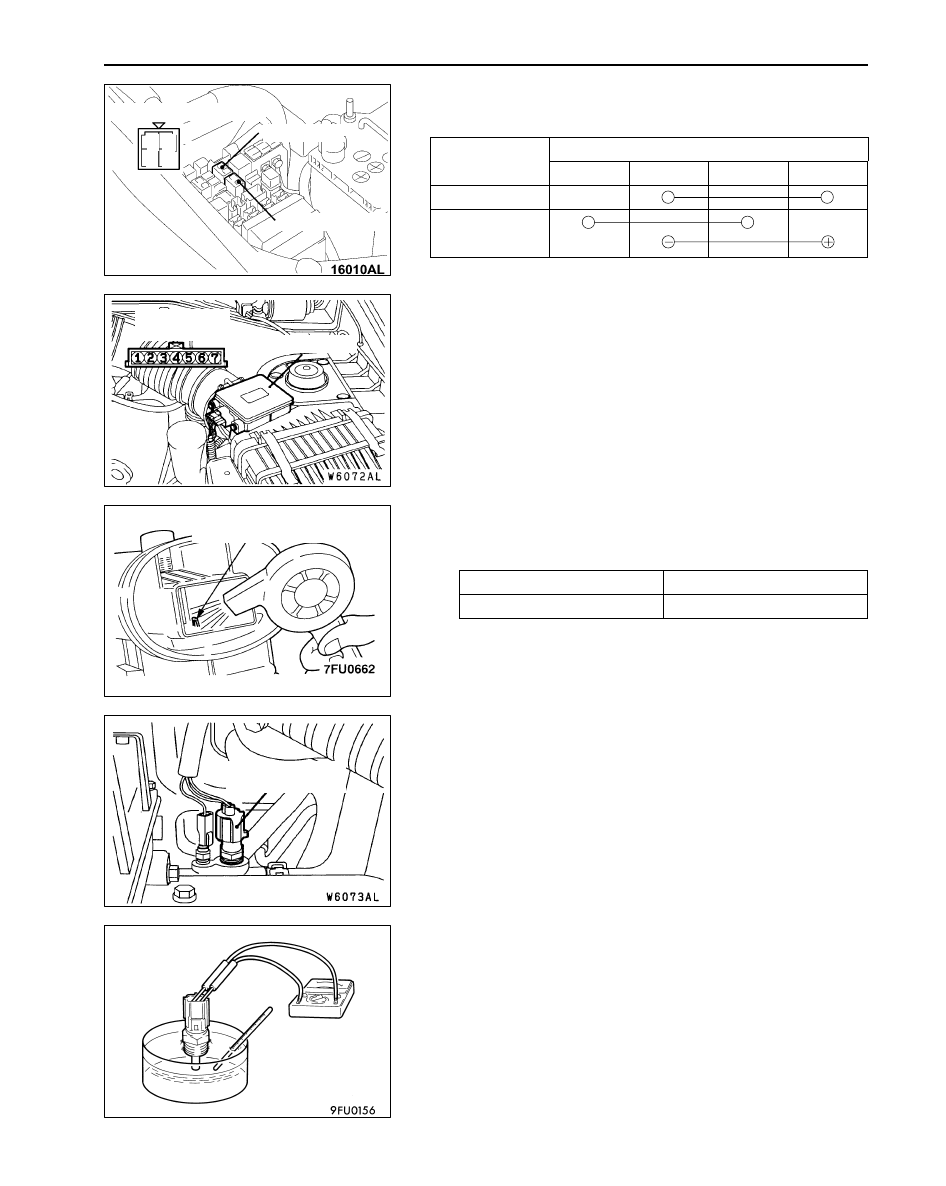Mitsubishi Pajero Pinin. Manual - part 129

MPI <4G9> –
On-vehicle Service
13C-102
CONTROL RELAY AND FUEL PUMP RELAY
CONTINUITY CHECK
Battery voltage
Terminal No.
y
g
1
2
3
4
Not supplied
Supplied
INTAKE AIR TEMPERATURE SENSOR CHECK
1.
Disconnect the air flow sensor connector.
2.
Measure resistance between terminals 5 and 6.
Standard value:
13 – 17 k
Ω
(at –20
_
C)
5.7 – 6.7 k
Ω
(at 0
_
C)
2.3 – 3.0 k
Ω
(at 20
_
C)
1.0 – 1.5 k
Ω
(at 40
_
C)
0.56 – 0.76 k
Ω
(at 60
_
C)
0.30 – 0.42 k
Ω
(at 80
_
C)
3.
Measure resistance while heating the sensor using a hair
drier.
Normal condition:
Temperature (
_
C)
Resistance (k
Ω
)
Higher
Smaller
4.
If the value deviates from the standard value or the
resistance remains unchanged, replace the air flow sensor
assembly.
ENGINE COOLANT TEMPERATURE SENSOR
CHECK
Caution
Be careful not to touch the connector (resin section) with
the tool when removing and installing.
1.
Remove the engine coolant temperature sensor.
2.
With temperature sensing portion of engine coolant
temperature sensor immersed in hot water, check
resistance.
1
4
3
2
Equipment side connector
Control relay
Fuel pump relay
Equipment side
connector
Air flow sensor
Intake air temperature
sensor
Engine coolant
temperature sensor